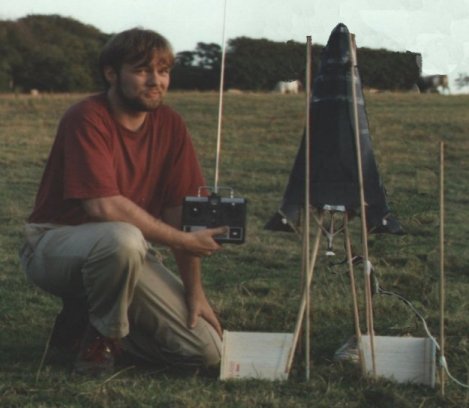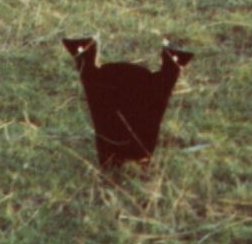

Aspirespace Rocket Engineering Society
Mk 10B Waverider
Since the 1980's, a lot of computational work has been done generating 'Cone derived' waveriders, so-called because the design software starts with the supersonic flow around a nosecone shape.
These designs have generated lots of lovely journal papers for their authors, and have taxed the most powerful computers, but it became clear that nobody had tried to build and fly one at low speed.
We built such a model, expecting it to be difficult to fly, but not that difficult!
It took over 100 glide-tests and numerous tweaks and aerodynamic palliatives to get something that would glide at a 45 degree glide-slope. But it wasn't land-able: at landing airspeeds, the high angle of attack necessary to stay in the air caused the vortices coming off the left and right wings to become too fat. They'd meet each other down the centreline of the vehicle's upper surface, and bounce off each other, causing the craft to roll over.
The Mk 10B would cruise though, so we stuck a ducted solid rocket motor on it under the CG, and boosted it into the air on a separating A-frame with three more solid rockets. It was steered by radio-controlled elevons at the very tips of the wings.


This is the pre-launch photo with its designer Rick Newlands at the International Rocketweek in Largs 1993; after booster separation, it cruised across two large fields on a very fast, low trajectory.
It wasn't landable though!
We then doubled the depth of the fuselage to create more internal volume and rechristened it the Mk 11. This didn't fly at all!
The reason the Mk 10B flew so badly we now know: its slenderness, the decreasing sweepback angle of its planform (view from above) as you headed nosewards, and its deliberately minimised vertical fin area.



